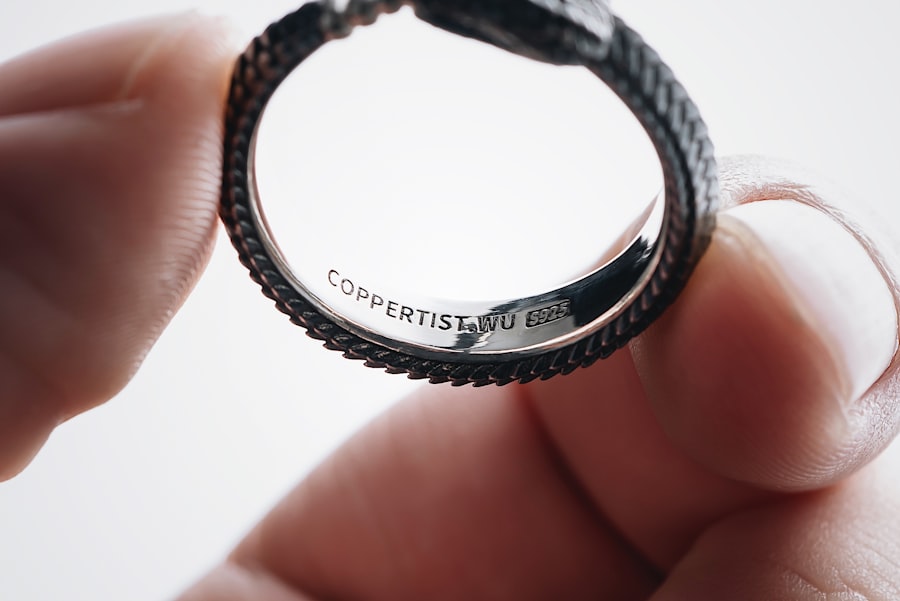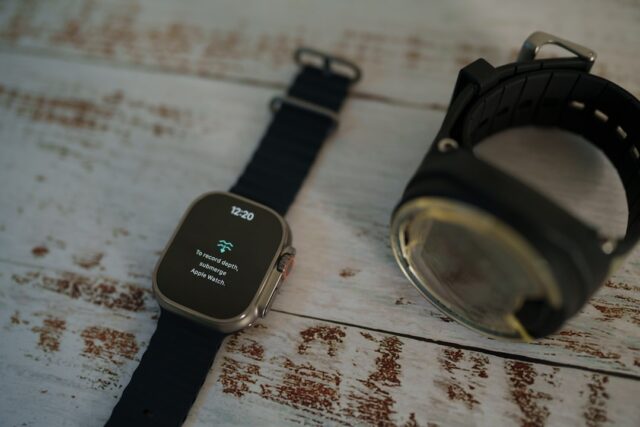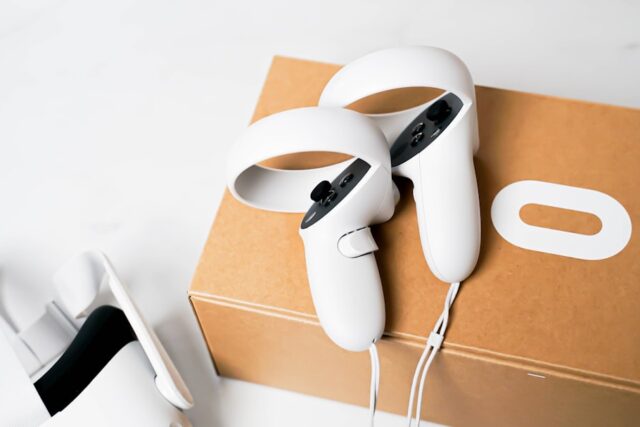Wearable technology has emerged as a transformative force in the realm of personal electronics, seamlessly integrating advanced functionalities into everyday accessories. This category of devices encompasses a wide array of gadgets, from fitness trackers and smartwatches to smart clothing and even smart jewelry. The primary allure of wearable technology lies in its ability to provide users with real-time data and insights about their health, fitness, and daily activities, all while maintaining a level of convenience that traditional devices cannot match.
As technology continues to evolve, wearables are becoming increasingly sophisticated, offering features that were once the realm of science fiction. The proliferation of wearable technology can be attributed to several factors, including advancements in sensor technology, miniaturization of components, and the growing consumer demand for health and wellness solutions. As people become more health-conscious and seek ways to monitor their well-being, wearables have stepped in to fill this gap.
The market has seen an influx of innovative products designed to cater to various needs, from tracking physical activity to monitoring vital signs. This article will delve into two prominent categories within the wearable tech landscape: smart rings and smartwatches, exploring their features, designs, and the unique roles they play in the lives of users.
The Rise of Smart Rings
Leading the Charge in Smart Ring Technology
Companies such as Oura and Motiv have pioneered this niche, creating rings that not only look elegant but also pack a punch in terms of technology.
Advanced Health Monitoring Features
One of the most notable aspects of smart rings is their focus on health monitoring. For instance, the Oura Ring is equipped with advanced sensors that track sleep patterns, heart rate variability, and activity levels. Users can gain insights into their overall health and wellness through an accompanying app that analyzes this data.
A Subtle yet Effective Approach to Health Tracking
The compact design of smart rings allows for continuous wear without discomfort, making them an attractive option for those who prefer a more subtle approach to health tracking. As consumers increasingly seek out devices that blend seamlessly into their lifestyles, smart rings are carving out a significant niche in the wearable technology market.
The Popularity of Smartwatches

In contrast to smart rings, smartwatches have gained immense popularity as multifunctional devices that serve as an extension of smartphones. These wrist-worn gadgets offer a wide range of features, including notifications for calls and messages, GPS navigation, music control, and various health tracking capabilities. Major tech companies like Apple, Samsung, and Garmin have invested heavily in smartwatch development, leading to a diverse array of options that cater to different user preferences and lifestyles.
The Apple Watch, for example, has become synonymous with smartwatch technology, offering a sleek design coupled with robust functionality. Its integration with the iOS ecosystem allows users to receive notifications, respond to messages, and even make calls directly from their wrist. Additionally, the Apple Watch includes advanced health monitoring features such as ECG readings and blood oxygen level tracking.
This versatility has contributed to its widespread adoption among consumers who appreciate the convenience of having essential functions readily available on their wrist.
Comparison of Features
| Features | Product A | Product B |
|---|---|---|
| Price | 100 | 120 |
| Storage | 256GB | 128GB |
| Camera | 12MP | 16MP |
| Battery Life | 10 hours | 12 hours |
When comparing smart rings and smartwatches, it becomes evident that each device offers distinct advantages tailored to different user needs. Smartwatches typically boast a broader range of features due to their larger screens and more powerful processors. They often include functionalities such as customizable watch faces, third-party app support, and extensive fitness tracking capabilities.
For instance, many smartwatches come equipped with built-in GPS for outdoor activities like running or cycling, allowing users to track their routes without needing to carry a smartphone. On the other hand, smart rings excel in their simplicity and focus on core health metrics. While they may lack some of the advanced features found in smartwatches, they often provide more accurate readings for specific health indicators due to their close contact with the body.
For example, the Oura Ring’s ability to monitor sleep quality is highly regarded among users seeking insights into their rest patterns. Additionally, smart rings tend to have longer battery life compared to smartwatches since they are designed for fewer functions and less frequent charging. This makes them an appealing choice for individuals who prioritize health tracking without the need for constant notifications or app interactions.
Design and Comfort
Design plays a crucial role in the appeal of both smart rings and smartwatches. Smartwatches often feature customizable bands and watch faces that allow users to express their personal style while enjoying the functionality of a digital device. The variety of materials used in smartwatch construction—such as stainless steel, aluminum, and silicone—enables consumers to choose options that best suit their aesthetic preferences and comfort levels.
Furthermore, many smartwatches are designed with water resistance in mind, making them suitable for various activities from swimming to running in inclement weather. In contrast, smart rings prioritize minimalism and comfort above all else. Their small size means they can be worn continuously without causing discomfort or interfering with daily activities.
Many designs are crafted from lightweight materials such as titanium or ceramic, ensuring durability while remaining unobtrusive. The sleek appearance of smart rings allows them to blend seamlessly with other jewelry or stand alone as a statement piece. This emphasis on design has made them particularly appealing to fashion-conscious consumers who may shy away from bulkier wearables.
Fitness and Health Tracking

Both smart rings and smartwatches offer impressive fitness and health tracking capabilities; however, they approach these functionalities differently. Smartwatches typically provide a comprehensive suite of fitness tracking features that cater to a wide range of activities. Users can track workouts across various sports—such as running, cycling, swimming, and even yoga—while receiving real-time feedback on metrics like heart rate, calories burned, and distance traveled.
Many models also include guided workouts and coaching features that help users achieve their fitness goals. Smart rings, while more limited in terms of activity tracking options, excel in providing detailed insights into specific health metrics. For example, the Oura Ring focuses heavily on sleep analysis by monitoring sleep stages (light, deep, REM) and offering personalized recommendations for improving sleep quality.
Additionally, it tracks daily activity levels and readiness scores based on recovery metrics such as heart rate variability and body temperature fluctuations. This targeted approach appeals to users who prioritize holistic health monitoring over extensive workout tracking.
Connectivity and Compatibility
Connectivity is another critical aspect when evaluating wearable technology. Smartwatches typically offer robust connectivity options that allow them to sync seamlessly with smartphones and other devices. Most models support Bluetooth connectivity for notifications and data transfer while also providing Wi-Fi capabilities for direct internet access when away from a phone.
This connectivity enables users to receive calls, messages, and app notifications directly on their wrist without needing to reach for their smartphones constantly. Smart rings also offer connectivity features but tend to focus more on syncing health data with companion apps rather than providing extensive notification capabilities. For instance, the Oura Ring connects via Bluetooth to its dedicated app on smartphones where users can view detailed insights into their health metrics over time.
While they may not provide the same level of interactivity as smartwatches regarding notifications or app usage, smart rings excel in delivering focused health data that can be easily accessed through an intuitive interface.
The Future of Wearables
As technology continues to advance at an unprecedented pace, the future of wearable devices looks promising yet complex. Innovations in sensor technology are likely to lead to even more sophisticated health monitoring capabilities in both smart rings and smartwatches. For instance, researchers are exploring ways to integrate non-invasive glucose monitoring into wearables—a feature that could revolutionize diabetes management for millions worldwide.
Additionally, advancements in artificial intelligence may enable wearables to provide personalized health recommendations based on individual data patterns. Moreover, as consumer preferences evolve towards more discreet forms of technology integration into daily life, we may see further growth in the popularity of smart rings alongside traditional wearables like smartwatches. The demand for stylish yet functional devices will likely drive innovation in design and materials used in both categories.
As manufacturers continue to explore new functionalities—such as stress management tools or enhanced biometric sensors—the landscape of wearable technology will undoubtedly expand further, offering consumers an ever-growing array of options tailored to their unique lifestyles and needs.
FAQs
What are smart rings and smartwatches?
Smart rings are wearable devices that are worn on the finger and are equipped with technology to track fitness, make payments, and receive notifications. Smartwatches are wearable devices that are worn on the wrist and offer similar features as smart rings, including fitness tracking, notifications, and mobile payments.
What are the main differences between smart rings and smartwatches?
The main difference between smart rings and smartwatches is the form factor. Smart rings are smaller and more discreet, while smartwatches are larger and more visible. Smart rings also have a more limited interface due to their smaller size, while smartwatches offer a larger screen for more functionality.
Which gadget is more popular currently, smart rings or smartwatches?
Currently, smartwatches are more popular than smart rings. Smartwatches have been on the market for longer and have a wider range of options from various manufacturers. Smart rings are a newer and less established product category.
What are the advantages of smart rings over smartwatches?
Some advantages of smart rings over smartwatches include their smaller and more discreet form factor, making them more comfortable to wear and less obtrusive. Smart rings also offer the convenience of being worn on the finger, which can be more convenient for certain activities.
What are the advantages of smartwatches over smart rings?
Some advantages of smartwatches over smart rings include their larger screen size, which allows for more functionality and a better user interface. Smartwatches also have a longer history in the market and a wider range of available apps and features.
Which gadget is likely to dominate in the future, smart rings or smartwatches?
It is difficult to predict which gadget will dominate in the future, as both smart rings and smartwatches have their own unique advantages. It is possible that both devices will coexist in the market, with each serving different use cases and consumer preferences.



MOST COMMENTED
Apps
10 Hidden Android Apps: Boost Productivity Instantly
Apps
Privacy-Focused Messaging Apps: A 2025 Comparison
Apps
Top Minimalist Apps for a Distraction-Free Life
Apps
Top Offline Apps for 2025: No Internet Needed
Gadget
The Battle of Wearables: Smart Rings vs. Smartwatches
Gadget
The Future of Mental Health: Wearable Gadgets on the Rise
Laptops
Top Laptops for Coding and Content Creation Under ₹70,000